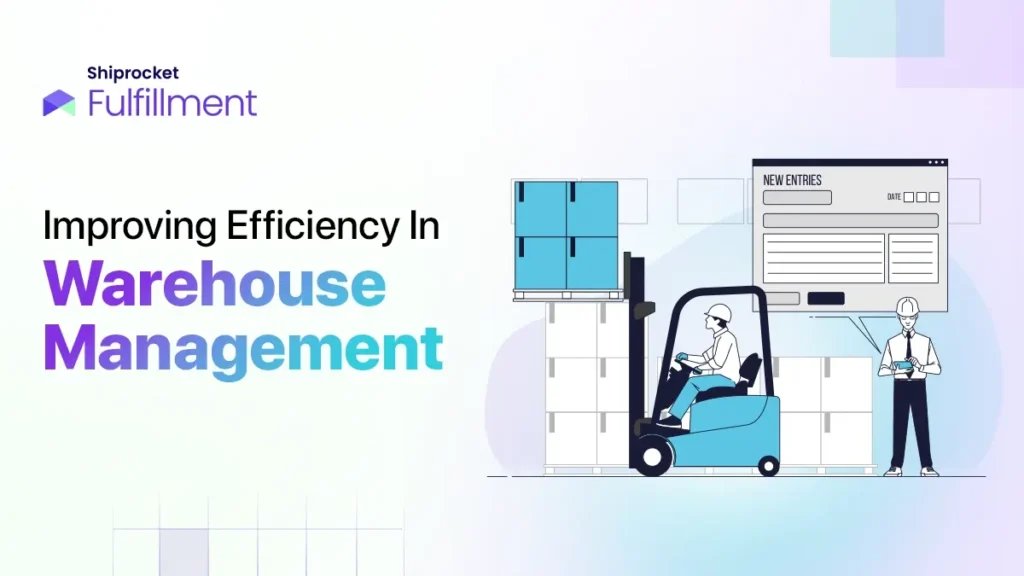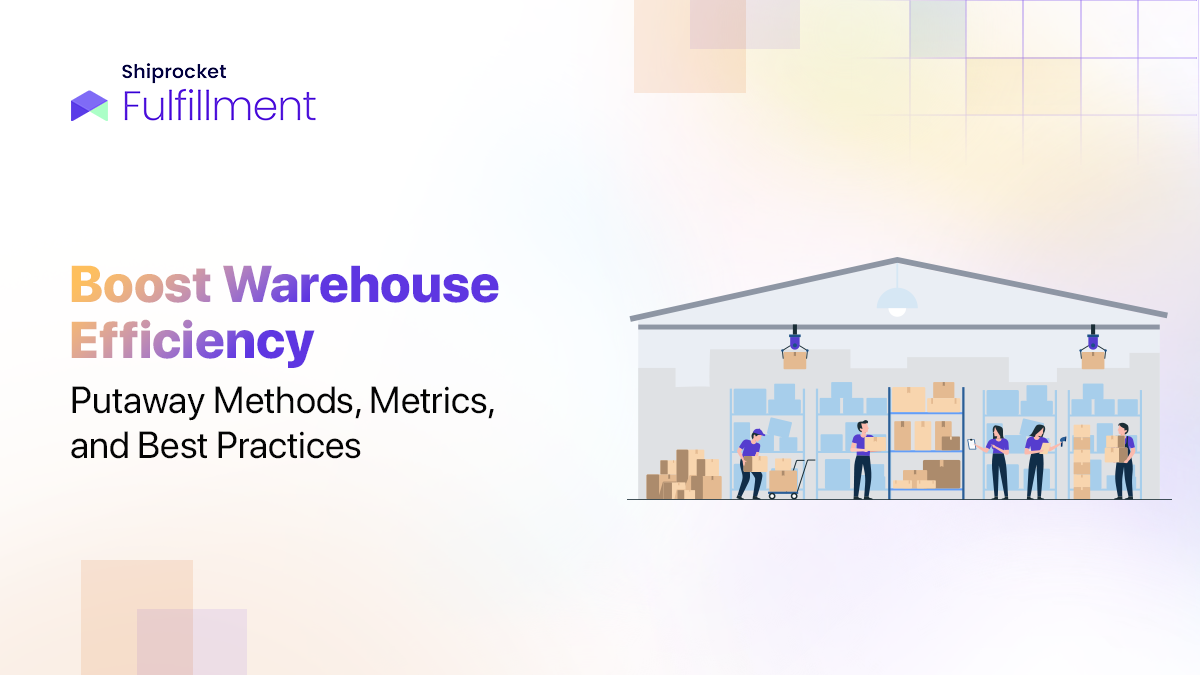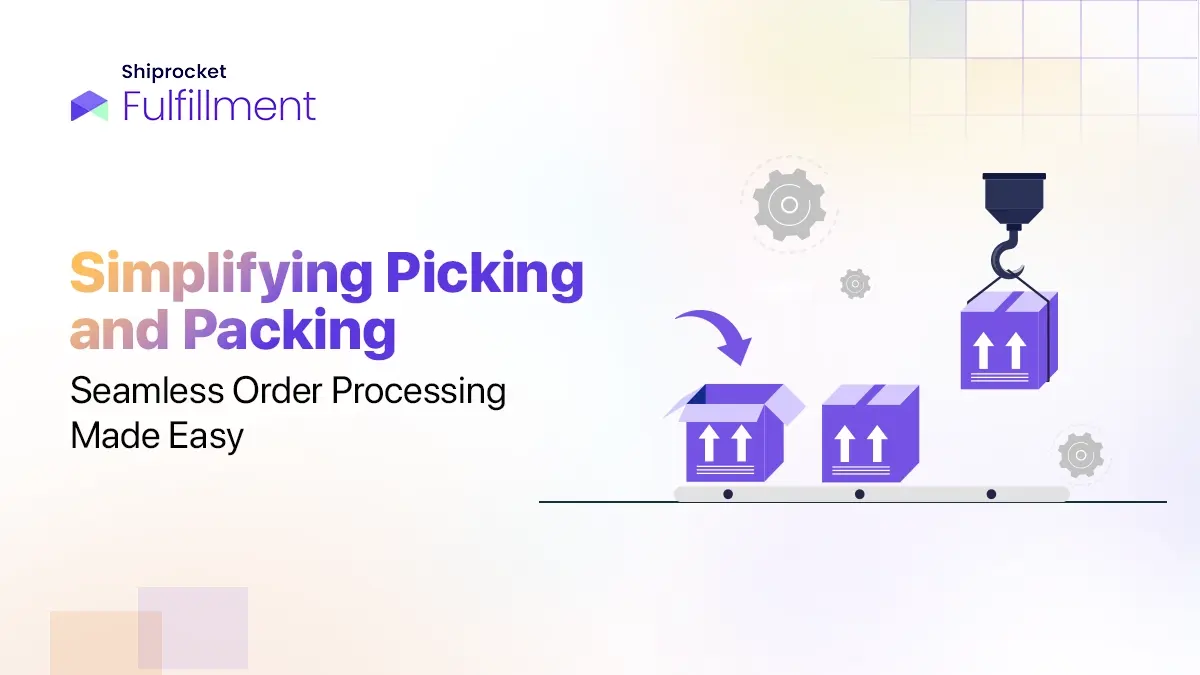Introduction
Warehousing is a crucial aspect of logistics and supply chain management. All businesses involved in selling a product require a warehouse, unless it’s a dropshipping business, to store their inventory. There’s no one-size-fits-all approach to warehouse storage management. However, how a business operates and manages its warehouse can have a significant impact on its daily processes and activities. A properly managed warehouse can ramp up your business processes, from inventory management to order fulfillment.

Let’s explore warehouse storage in detail, why you need warehousing solutions, the challenges of poor warehousing, and more.
Understanding Warehousing: An Overview
The process of storing physical inventory in preparation/manufacturing finished goods for sale and distribution is termed warehousing. All kinds of businesses must store or house raw materials temporarily in abundant quantities before distributing them along the supply chain processes for product manufacturing.
Let us consider, for instance, that several eCommerce businesses buy their raw materials in bulk from their suppliers. These are then delivered to the business’s warehouse for storage. Either the business or the fulfillment provider will then implicitly select and pack the items from the warehouse stores and distribute them across the supply chain to produce a completed product that is delivered to the customer upon ordering.
eCommerce has propelled growth and innovation for creative solutions throughout the warehousing industry. This has led the market to grow to 5.7 trillion U.S. dollars worldwide and is expected to grow even more in the coming years. Thus, it has caused many businesses to make substantial investments worldwide to enhance their supply chains and logistics processes to get their goods and services to their customers more quickly and effectively.
This isn’t exclusive to online retailers. Despite having space constraints in their locations to maintain inventory, the majority of physical retail enterprises nevertheless need to meet customer demand. Even if their suppliers are in other nations and are sluggish to make and transport new products, having extra inventory in local warehouses ensures they can always replenish their stores during busy holidays.
Why You Require Warehousing Solutions
Warehouse management is simply the process of efficiently managing and overseeing all daily activities within a warehouse facility. Warehouse management is an extremely broad concept encompassing several tasks, including:
- Keeping track of inventory,
- Selecting and packaging orders,
- Receiving and shipping items, and
- Ensuring a seamless product flow.
As warehouse management is directly associated with a company’s revenue, customer satisfaction, and general efficiency, it is absolutely vital for every business. Businesses may optimise and monitor inventory levels, lower storage and transportation expenses, and guarantee prompt order fulfillment by effectively managing warehouse-related duties.
What Could Go Wrong with Poor eCommerce Warehouse Handling?
Several things can affect a business due to poor warehouse handling and management. These include:
- Accidental Redundancy:
When a workflow is poorly planned and effective, the task becomes extremely tedious, repetitive, and inefficient. This forces the business to go back and fix the issue, which causes redundancies while also increasing operational costs. They experience this rework in larger warehouses more often as the entire process is larger.
- Disorganised Warehouse Layout:
According to a recent Logistics Management survey, manufacturers tend to only use roughly 68% of the typical storage capacity.
Inefficient utilisation of available space in warehouses results in a shortage of storage. Creating the ideal warehouse plan can address this issue. This maximises the vertical and floor space while providing enough clearance for warehouse workers. It entails investigating methods to lower labour expenses and labour costs by using automation and technology, enhancing product accessibility in the warehouse, and systematically classifying inventory.
- Poor Inventory Management:
Wasp Barcode Technologies is a company that surveyed small businesses to understand how they handle and track their inventory. They found that around 43% of small businesses maintain inventory manually or don’t track it. Based on another poll conducted by Peoplevox, about 34% of companies have postponed or delayed their delivery dates as the items specified in the order were not in stock.
Miscalculations and errors are very common when inventory procedures are carried out manually. By adopting warehouse management software that contains real-time inventory management functions, these issues can be avoided altogether. Usually, a system begins by gathering your inventory data using a stationary or portable barcode scanner. The scanned data is then sent to your integrated software, which catalogues and tracks your inventory.
- Unsatisfactory Order Management:
The most error-prone function is probably order management. Order management includes all of the procedures that begin when an order is received, including accepting it, selecting, packaging, and sending the appropriate goods to the right consumer.
Furthermore, order management is also responsible for managing any post-sale procedures like refunds and returns. Any error in one of these procedures has the potential to bring down the workflow as a whole, necessitating a complete restart of each phase. This is a significant waste of resources, including time and money, and will cause your customer’s order to arrive later than planned.
The Building Blocks of Warehousing
The building blocks of warehousing include the following:
- Planning Based on the Driven Demand:
Assessing data on performance and automating your processes are the first steps in demand planning for your warehouse needs. According to Tecsys’ research, demand during planning can easily lower inventory requirements by 15%. Moreover, it might assist in filling orders 20% quicker. They also discovered that it increased sales by 2% and occasionally much more. The real kicker is that it increased gross margins by 3 to 5%.
- Agility and Flexibility:
It is critical to incorporate dexterousness into the supply chain as it needs to be flexible, quick to adapt, and able to take advantage of shifting market forces and demands. The consultants of McKinsey studied different techniques to identify the key components of agility when researching the supply chain performance of businesses across multiple industries.
They discovered that organisations achieved greater results when they used agile principles to make them more responsive to both the good and the bad. More precisely, they discovered that firms with agile methods and strong supply chain monitoring outperformed their rivals by 7 percentage points in terms of service quality.
3. Gains, Resources, and the Planet:
This is often referred to as the ‘triple bottom line.’ The standard metric is corporate revenue or profit and loss on a hypothetical basis. Elkington, a strategist and serial entrepreneur, refers to the second as their ‘people account’ to point out the resources and their importance. This is an indicator of how ethically sound a supply chain is. Elkington refers to the third as a ‘planet.’
This gauges the organisation’s level of environmental responsibility and whether the supply chain is sustainable. The supply chain can be linked to the triple bottom line and monitored over time. Therefore, a business must account for not only its corporate and financial endeavours through its supply chain but also account for the planet and its sustainability.
- Integration and Communication:
Even though this ideology should go without saying, it frequently does not. Behind every successful supply chain that satisfies the business’s goals, a team collaborates well, with good synergy and specific chemistry. A successful supply chain requires a cooperative and synergistic cross-functional team with a foundation for sharing gains and risks.
- Control and Visibility:
Today’s supply chain has several indicators through the Internet of Things (IoT) and combined big data. This offers helpful details regarding operations as they take place in real-time. By using the past data, it also aids in making predictions. These qualities allow for prompt and precise decision-making to prevent problems from arising and to encourage favourable results.
Handing Shipping Over to Logistics Experts
Transporting your finished products to your customers as quickly and efficiently as possible without any hassle is a crucial requirement for every business. After all, successful shipments help to grow the market and contribute to a thriving business and satisfied customers. Here are five reasons for you to hand over your shipping needs to logistics experts:
- It saves you both time and money as they ensure all your deliveries are done on time.
- They eliminate the documentation processes for you.
- They handle all the issues about shipping regulations and customs clearances.
- They help you gain greater visibility in dynamic markets.
- The experts optimise all the packing and delivery routes, saving you the hassle and crediting you for sustainability initiatives.
Shiprocket Fulfillment: The Industry Experts
Managing inventory and delivering orders to clients are only two of the many ways that a 3PL partner may simplify shipping logistics. You may then select the fulfillment center location or locations to keep inventory in after connecting your online store to our fulfillment software. Everything related to warehousing can be handled by industry experts like Shiprocket Fulfillment. You can monitor everything in real-time from Shiprocket’s solutions. Orders will automatically be sent to the closest fulfillment facility to their destination when they are placed, where the fulfillment process will start. Next, dispatch orders using the most economical way.
Conclusion
Several trends are expected to completely transform how businesses run and enhance supply chain efficiency. Advanced technologies, such as artificial intelligence, robotics, and automation, will forever change how businesses do warehousing. It’ll make warehouses more optimised, adaptable, and convenient. Furthermore, implementing sustainable and green techniques will help lessen warehouses’ negative effects on the environment.
With these trends influencing the way that warehousing is done in the future, businesses can boost customer satisfaction, gain a competitive advantage, and expand their operations. The warehouse sector is experiencing exciting times, and companies that adopt these trends will be well-positioned to prosper in the quickly evolving global economy.
The three types of warehouses are private warehouses, public warehouses, and government warehouses.
The warehouse storage processes include picking, packing, putting away, inventory tracking, shipping, reporting, returns, and more. It also involves inventory and warehouse management.
The four basic functions of a warehouse include storing, moving, packing, and shipping final products.





